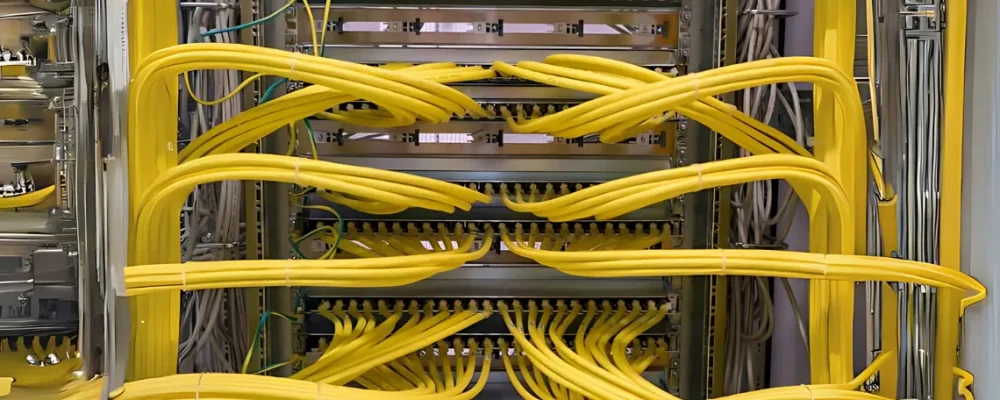Summary: Structured cabling forms the basis of any modern business network, with reliable connectivity for data, voice, and multimedia. Most firms ask: What are the 6 components of a structured cabling system? Knowledge of these components of entrance facilities, equipment rooms, backbone cabling, horizontal cabling, telecommunications rooms, and work areas is considered imperative in building scalable, efficient, and future-proof networks.

Modern businesses depend on a strong network for phone systems, video conferencing, cloud access, and safe file sharing. Structured cabling is the base for all connectivity, a recognized method of designing and installing cabling systems to serve voice, data, and multimedia communication needs.
One highly asked question by businesses is: What are the 6 components of structured cabling? Knowing these components will allow companies to plan, install, and construct networks that they can easily expand and maintain.
Structured cabling is the system of cabling and hardware, standardized to provide building-level or campus-wide telecommunications infrastructure for businesses or data centers. In other words, a structured cabling system offers a unified avenue of design for installation, maintenance, and upgrades, rather than depending on a patchwork of wiring methods.
It also follows an international standard, such as TIA/EIA-568, to maintain compatibility and consistency across systems and devices.
The six primary components of structured cabling are:
Let’s explore each one in detail.
Think of the entrance facility as where external cabling (from service providers or other buildings) enters your premises. It has connections to the internet providers, phone lines, and private networks.
Key aspects on the list include:
Without a properly planned entrance facility, your internal systems may be compromised, connectivity may suffer, and security may be at risk.
The equipment room holds critical network equipment, including servers, routers, switches, and storage. While smaller telecom rooms are more isolated, an equipment room is larger and often located centrally to support a single building or campus.
Some key characteristics include:
Equipment rooms are the “nerve centers” for your structured cabling system. How they are organized directly affects the efficiency and reliability of your network.
Backbone or vertical cabling joins various telecommunications rooms, equipment rooms, and entrance facilities anywhere within one building or among several buildings.
Key considerations are:
The backbone is the primary pathway along which large volumes of data flow between significant network domains. An inadequately dimensioned backbone (or vertical pathway) will become a bottleneck and adversely affect scalability.
Horizontal cabling runs from telecom rooms to work areas on the same building floor. “Horizontal” cabling moves usually through ceiling areas, conduits, or under raised flooring to desks, offices, or workstations.
Major aspects include:
Horizontal cabling supposedly affects the good user experience since it connects end devices- computers, phones, or printers- to the network.
The telecom room (TR) is the nomenclature for the location where the backbone and horizontal cabling systems are interconnected. A building usually has one telecom room per floor.
Some key points to consider include:
Thus, the telecom room will keep cables orderly, accelerate troubleshooting, and allow for necessary modifications.
The work area allows end users to plug in and access the network through outlet boxes, patch cords, and devices. It serves as the last link of the cabling system.
Some points of concern:
Though often overlooked by designers, the work area is part of the system with which employees interact daily. Proper design assures consistent performance and minimum downtime.

Every properly designed cabling system offers several benefits:
Structured cabling is a strategic investment and not a technical necessity for any enterprise, big or small.
When adopting a structured cabling system, to enable optimal performance, observe certain best practices:
In testing– Regularly test the system’s performance, which enables problem identification right at the beginning.
Sometimes, standards are there, and still some gulps from businesses are well dispensed with structured cabling diagramming:
Avoiding these pitfalls will go a long way to ensuring your cabling infrastructure stays good and efficient.

Structured cabling is the underlying medium for present-day connections, through which businesses conduct operations efficiently and can thus be adapted to future requirements. Organizations can ensure that their networks are orderly, scalable, and suitable for future utilization by understanding six core components, ranging from entrance facilities to work areas.
At Network Drops, we design and install structured cabling systems according to your corporate requirements. Whether dusting an older existing setup for expansion or planning new solutions, have experts working so that existing infrastructures will always contribute to the performance and reliability of their site.
Ready to optimize your network? Contact Network Drops today to get started.
The six building blocks are the entrance facilities, equipment room, backbone cabling, horizontal cabling, telecommunications room, and work areas.
Backbone cabling interconnects several major areas of the network over floors or buildings. Horizontal cabling connects telecommunications rooms to the individual workstations on that floor.
The structured cabling system needs to be reviewed every 5 to 10 years, in case any major network upgrade is planned.
Not always. Fiber can offer higher bandwidth and longer distances, but copper remains cost-effective and is sufficient for many office environments.
Yes. Wireless access points, in fact, still rely on a wired connection to the backbone and horizontal cabling to deliver good performance.
"*" indicates required fields
Scott Fcasni is the driving force behind Shock I.T. Support’s commercial datacomm cabling division, delivering expert solutions that power reliable, high-performance network infrastructures. With extensive experience in structured cabling and a commitment to precision, Scott ensures that every project—whether for small businesses or large enterprises—meets the highest standards of quality and scalability.